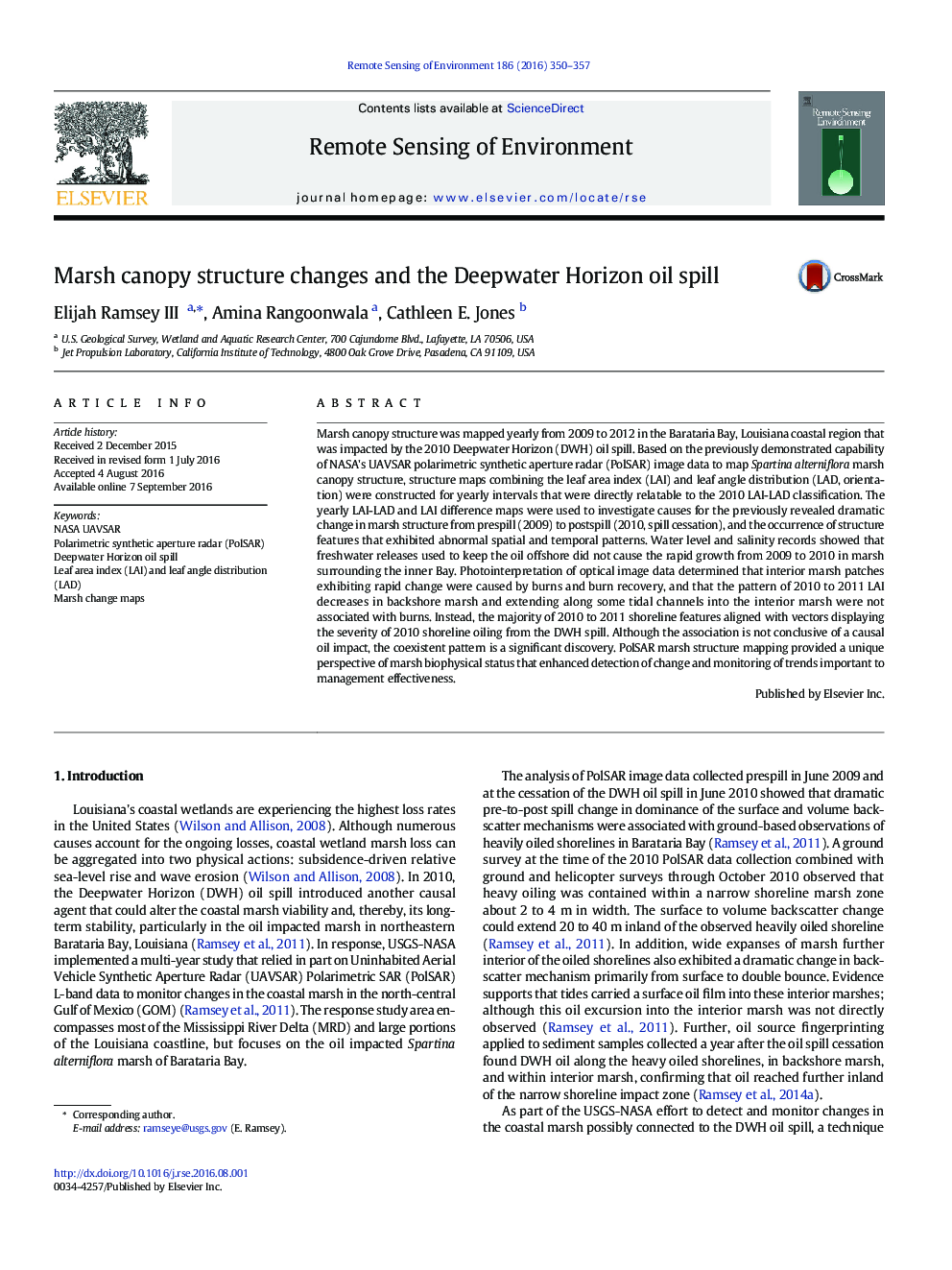| کد مقاله | کد نشریه | سال انتشار | مقاله انگلیسی | نسخه تمام متن |
|---|---|---|---|---|
| 6345080 | 1621214 | 2016 | 8 صفحه PDF | دانلود رایگان |

- PolSAR mapping offers a unique perspective of marsh structure status and trends.
- Marsh structure suggests possible latent connection to Deepwater Horizon oil spill.
- 2010 to 2011 backshore marsh structure change tracked shoreline oil impact severity.
- Freshwater releases did not cause the 2010 backshore marsh structure change.
- Marsh structure mapping detected marsh burns and quantifiably tracked recovery.
Marsh canopy structure was mapped yearly from 2009 to 2012 in the Barataria Bay, Louisiana coastal region that was impacted by the 2010 Deepwater Horizon (DWH) oil spill. Based on the previously demonstrated capability of NASA's UAVSAR polarimetric synthetic aperture radar (PolSAR) image data to map Spartina alterniflora marsh canopy structure, structure maps combining the leaf area index (LAI) and leaf angle distribution (LAD, orientation) were constructed for yearly intervals that were directly relatable to the 2010 LAI-LAD classification. The yearly LAI-LAD and LAI difference maps were used to investigate causes for the previously revealed dramatic change in marsh structure from prespill (2009) to postspill (2010, spill cessation), and the occurrence of structure features that exhibited abnormal spatial and temporal patterns. Water level and salinity records showed that freshwater releases used to keep the oil offshore did not cause the rapid growth from 2009 to 2010 in marsh surrounding the inner Bay. Photointerpretation of optical image data determined that interior marsh patches exhibiting rapid change were caused by burns and burn recovery, and that the pattern of 2010 to 2011 LAI decreases in backshore marsh and extending along some tidal channels into the interior marsh were not associated with burns. Instead, the majority of 2010 to 2011 shoreline features aligned with vectors displaying the severity of 2010 shoreline oiling from the DWH spill. Although the association is not conclusive of a causal oil impact, the coexistent pattern is a significant discovery. PolSAR marsh structure mapping provided a unique perspective of marsh biophysical status that enhanced detection of change and monitoring of trends important to management effectiveness.
Journal: Remote Sensing of Environment - Volume 186, 1 December 2016, Pages 350-357